Exposure
Metering
Choose how the camera sets exposure.
| Method | Description | |
|---|---|---|
| L | Matrix metering | Produces natural results in most situations. The camera meters a wide area of the frame and sets exposure according to tone distribution, color, composition, and distance. |
| M | Center-weighted metering | Classic meter for portraits. Camera meters entire frame but assigns greatest weight to center area. Recommended when using filters with an exposure factor (filter factor) over 1×. |
| N | Spot metering | Choose this mode to ensure that subject will be correctly exposed, even when background is much brighter or darker. Camera meters current focus point; use to meter off-center subjects. |
-
Display metering options.
Press the P button, then highlight the current metering method in the information display and press J.
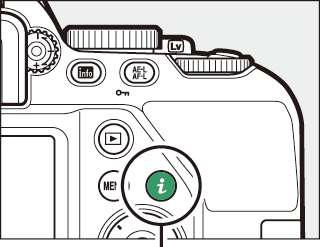
P button
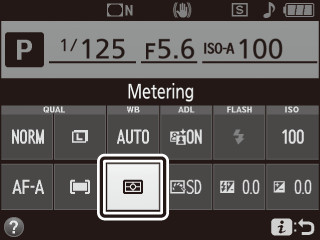
-
Choose a metering method.
Highlight an option and press J.
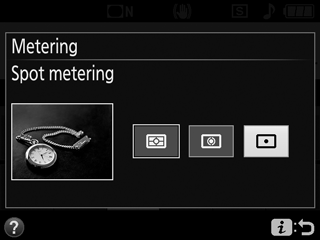
Spot Metering
If e (Auto-area AF) is selected for AF-area mode during viewfinder photography (0 AF-Area Mode), the camera will meter the center focus point.
Autoexposure Lock
Use autoexposure lock to recompose photographs after using M (Center-weighted metering) and N (Spot metering) to meter exposure; note that autoexposure lock is not available in i or j mode.
-
Lock exposure.
Position the subject in the selected focus point and press the shutter-release button halfway. With the shutter-release button pressed halfway and the subject positioned in the focus point, press the A (L) button to lock exposure.
Shutter-release button
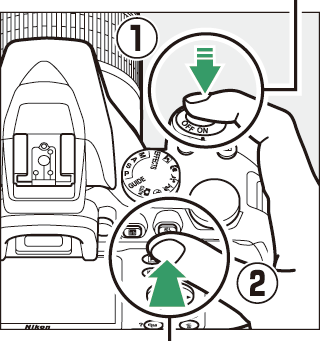
A (L) button
While exposure lock is in effect, an AE-L indicator will appear in the viewfinder and the monitor.


-
Recompose the photograph.
Keeping the A (L) button pressed, recompose the photograph and shoot.


Adjusting Shutter Speed and Aperture
While exposure lock is in effect, the following settings can be adjusted without altering the metered value for exposure:
| Mode | Setting |
|---|---|
| Programmed auto | Shutter speed and aperture (flexible program; 0 Flexible Program) |
| Shutter-priority auto | Shutter speed |
| Aperture-priority auto | Aperture |
The new values can be confirmed in the camera displays.
The metering method itself cannot be changed while exposure lock is in effect.
Exposure Compensation
Exposure compensation is used to alter exposure from the value suggested by the camera, making pictures brighter or darker (0 Exposure compensation). It is most effective when used with M (Center-weighted metering) or N (Spot metering) (0 Metering).

–1 EV

No exposure compensation

+1 EV
To choose a value for exposure compensation, keep the E (N) button pressed and rotate the command dial until the desired value is displayed.
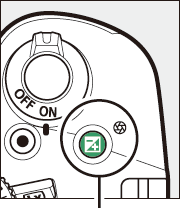
E (N) button
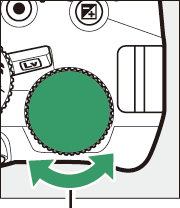
Command dial
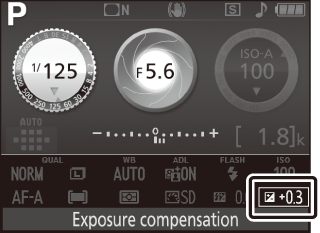

+ 0.3 EV
Normal exposure can be restored by setting exposure compensation to ±0. In P, S, A, and M modes, exposure compensation is not reset when the camera is turned off. In scene and % modes, exposure compensation will be reset when another mode is selected or the camera is turned off.
The Information Display
Exposure compensation options can also be accessed from the information display (0 The P Button).
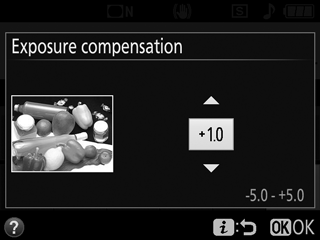
Mode M
In mode M, exposure compensation affects only the exposure indicator.
Using a Flash
When a flash is used, exposure compensation affects both background exposure and flash level.
Flash Compensation
Flash compensation is used to alter flash output from the level suggested by the camera, changing the brightness of the main subject relative to the background. Flash output can be increased to make the main subject appear brighter, or reduced to prevent unwanted highlights or reflections (0 Flash compensation).
Keep the M (Y) and E (N) buttons pressed and rotate the command dial until the desired value is displayed. Normal flash output can be restored by setting flash compensation to ±0. Flash compensation is not reset when the camera is turned off (in scene mode, flash compensation will be reset when another mode is selected or the camera is turned off).

M (Y) button

E (N) button
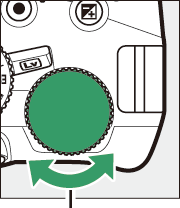
Command dial
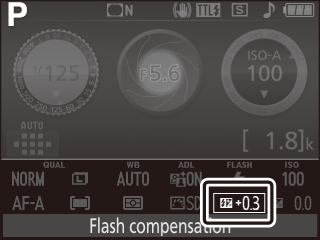

+ 0.3 EV
The Information Display
Flash compensation options can also be accessed from the information display (0 The P Button).
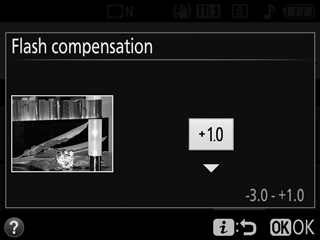
Optional Flash Units
Flash compensation is also available with optional flash units that support the Nikon Creative Lighting System (CLS; 0 Compatible Flash Units). The flash compensation selected with the optional flash unit is added to the flash compensation selected with the camera.
